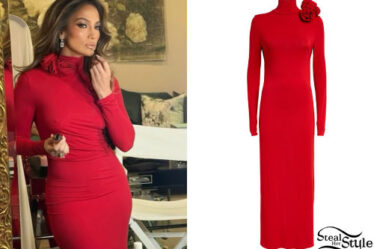
For years, the mining giants that control the global diamond trade have waged a marketing war against the rise of lab-grown diamonds, supported by the luxury jewellery sector.
Polished campaigns have aimed to frame the traditional diamond industry in a positive light, while executives have dismissed synthetic stones as lower-end baubles.
“Lab-grown diamonds don’t have any [history],” Cartier chief executive Cyrille Vigneron said in an interview published in The State of Fashion: Watches and Jewellery report published last year. “They’ve lost their singularity and lost the fact that they were made by the Earth millions of years ago.”
But natural diamonds come with messy environmental and ethical baggage that is increasingly at odds with the values shaping the shopping habits of young consumers. In contrast, lab-grown diamond purveyors have sought to portray themselves as a modern, tech-backed and sustainable alternative.
It’s a microcosm of a broader debate playing out across the industry as sustainability becomes a materials battleground and innovations claiming to have a lower environmental impact and more ethical supply chains pose disruptive threats to conventional players.
Now luxury’s biggest company, LVMH, is taking a bet on cultivated stones. The group’s venture arm, LVMH Luxury Ventures, has taken an undisclosed stake in Israeli lab-grown diamond start-up Lusix as part of a $90 million funding round.
While luxury jewellers like Tiffany, which LVMH acquired last year, remain aloof from cultivated stones, the move is the latest sign that changing consumer attitudes and values are shifting what can constitutes luxury in the modern era.
Lab-grown diamonds are cultivated by either subjecting a “seed” of a diamond to extreme pressure and heat or through a newer, low-pressure process where carbon atoms are grown inside a gas chamber. The process takes a matter of weeks and the results are chemically identical to diamonds mined from the ground.
While significant amounts of energy are required to run these processes, lab-grown diamonds skirt the taint of human rights abuses and conflict financing that continue to plague the natural diamond industry. Lusix says it only uses solar power, describing its stones as “sun grown.”
The disruptive forces created by changing consumer tastes and new technologies are already apparent in other parts of the industry; large luxury labels have dropped fur in rapid succession over the last five years, with Kering chief executive François-Henri Pinault stating baldly that “some materials have no place in luxury.”
Meanwhile, new business models like resale that were initially aggressively rejected by big luxury players are now talked about as strategic additions that can support ambitions to reduce waste and create pathways to continue growing revenue and profits without increasing environmental impact.
Diamonds are perhaps luxury’s most culturally evocative touchpoint. Their shine has been burnished by a mix of carefully controlled supply and generations of powerful advertising campaigns that have bolstered their position as glittering symbols of status and love. But the trade is ripe for disruption.
Last year, Pandora, the world’s largest jewellery maker, said it would stop using mined diamonds altogether as part of a broader strategy to address unethical production methods for its raw materials. And while lab-grown stones remain a small fraction of the overall market, awareness and demand is continuing to grow, experts say. Their lower price point has meant the stones have been pitched as more of a mass fashion product, but luxury could lean into a different narrative.
LVMH Luxury Ventures’ investment in lab-grown diamonds comes against a broader backdrop of disruption. Prices of rough diamonds in some parts of the market have surged this year in response to stringent sanctions against Russian state-backed miner Alrosa. The company accounts for about a third of global diamond production, rivalling De Beers in its market significance.
And while most luxury jewellers continue to focus their efforts to tap into mounting demand for ethical and sustainably sourced stones on building transparency and traceability into their supply chains for mined diamonds, lab-grown stones are making inroads.
Last year, former Harry Winston chief executive Frédéric de Narp and longtime Cartier executive Coralie de Fontenay teamed up to form investment fund Luximpact, with the aim to reboot legacy jewellery brands using only lab-grown and non-virgin materials.
Net-a-Porter has introduced its first lab-grown diamond brand, onboarding fine jewellery brand Kimaï. Earlier in the year, LVMH-owned Tag Heuer tested the water for lab-grown diamonds with a limited edition watch studded with Lusix diamonds that retailed at the extremely luxury price of around $375,000.
“It’s a new material that was taboo a year ago, and it’s not a taboo any more,” de Narp said. “It is just the future; this is an evolution.”



